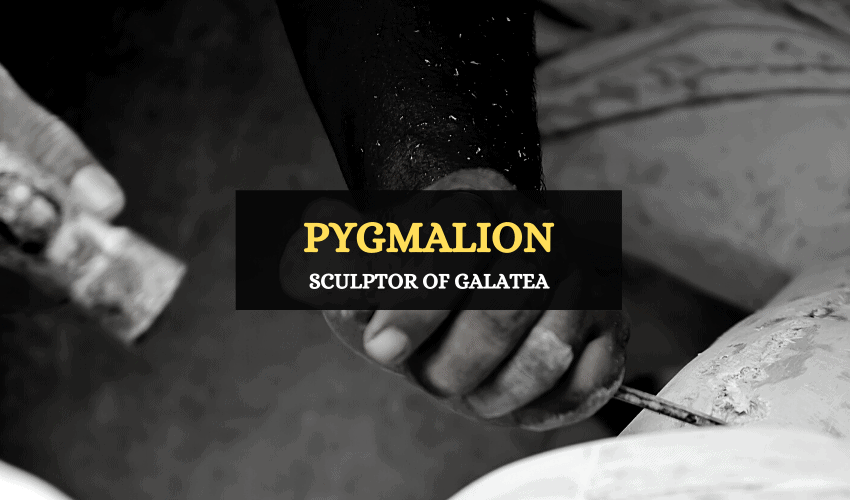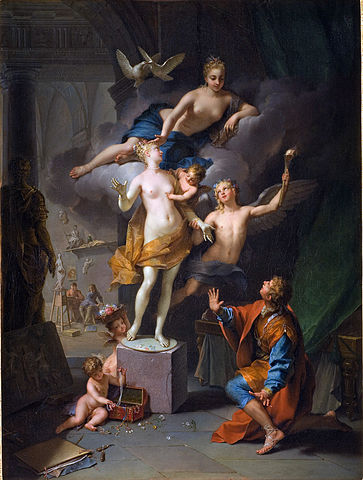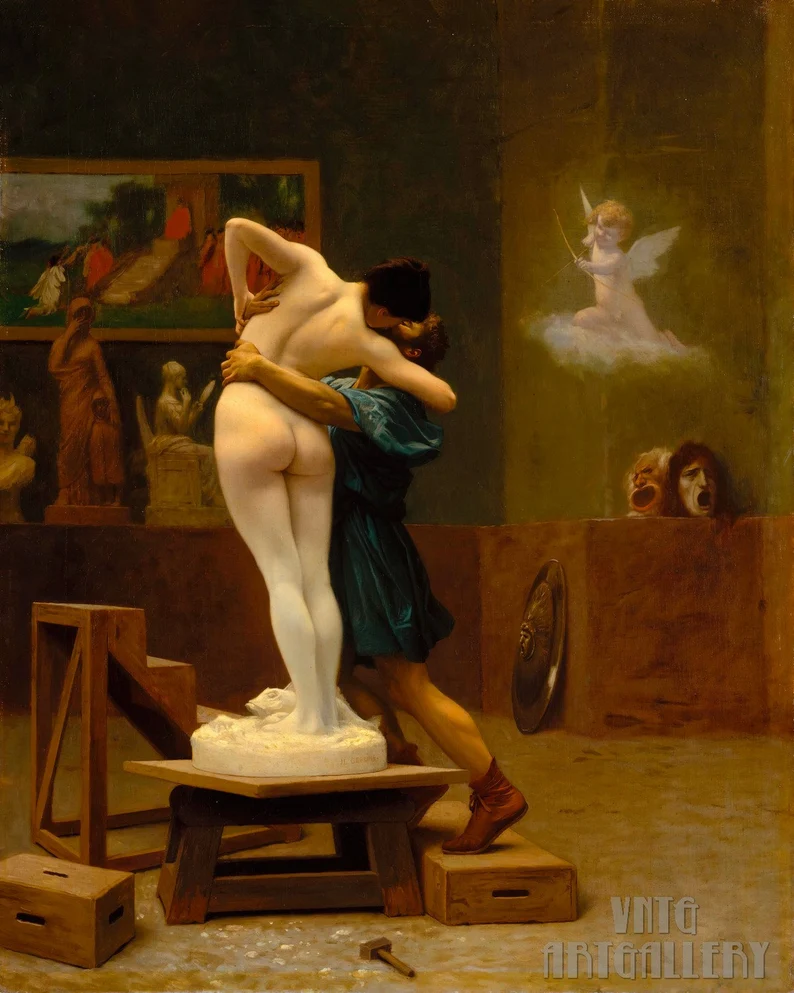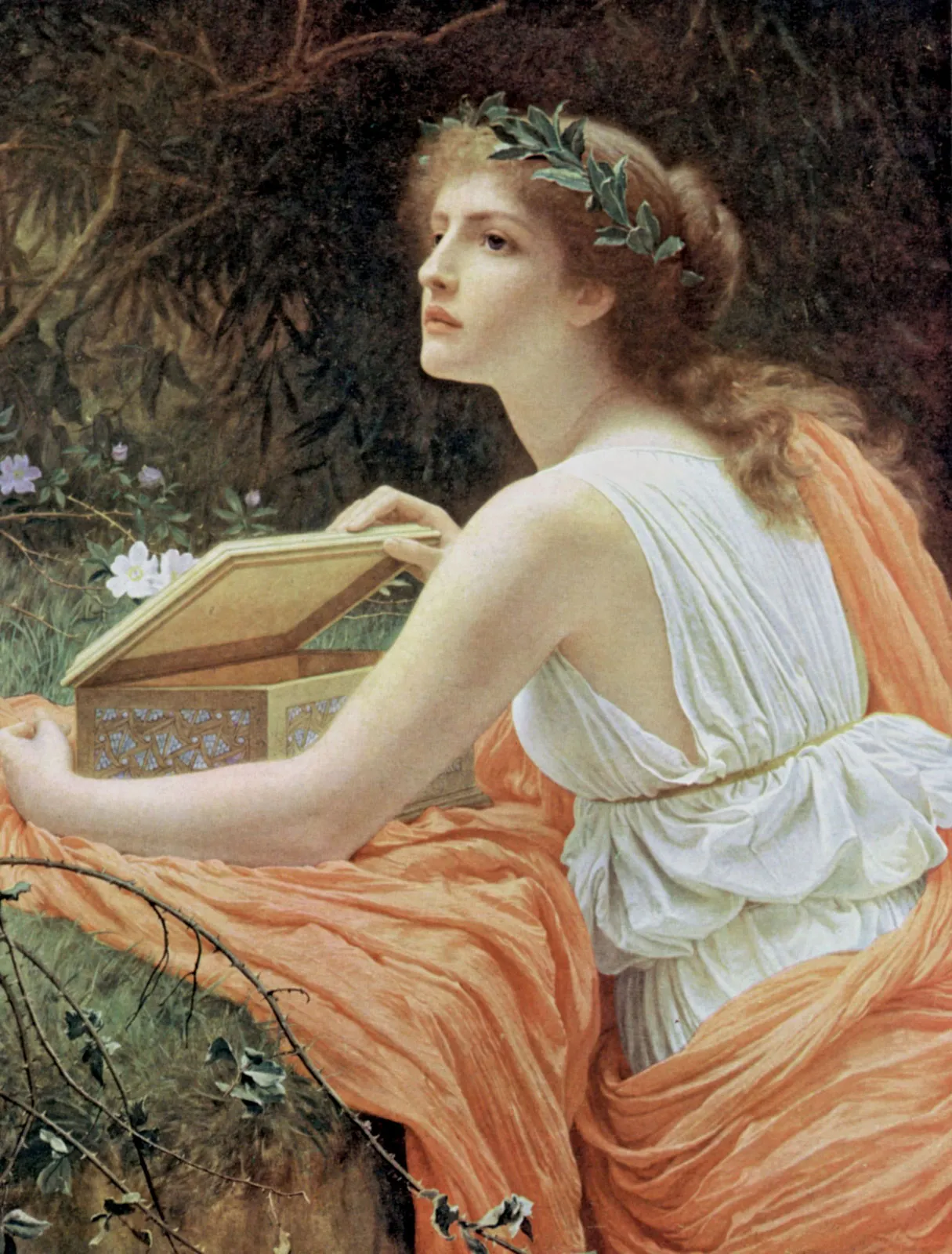
Table of Contents
Pygmalion, the renowned king and sculptor of Cyprus, gained fame for his unique romance: he fell deeply in love with a statue of his own creation. This captivating tale has inspired myriad literary works, etching Pygmalion’s legacy in the annals of history. Let’s take a closer look into his myth.
Who was Pygmalion?

According to some sources, Pygmalion was a son of Poseidon, the Greek god of the sea. But there are no records of who his mother was. He was the king of Cyprus as well as a famous ivory sculptor. His artworks were so fantastic that they seemed real. He lived in the city of Paphos in Cyprus. Other stories propose that Pygmalion was not a king, but just a common man, whose skills as a sculptor were superb.
Pygmalion and Women
After watching women working as prostitutes, Pygmalion started despising them. He felt shame for women and decided that he would never marry and waste time with them. Instead, he delved into his sculptures and created beautiful depictions of perfect women.
Pygmalion and Galatea

His best work was Galatea, a sculpture so gorgeous that he could not help but fall in love with her. Pygmalion dressed his creation in the finest clothes and gave her the best ornaments he could find. Every day, Pygmalion would adore Galatea for hours.
Pygmalion decided to pray to Aphrodite, the goddess of beauty and love, to give him her favor. He asked Aphrodite to give life to Galatea so that he could love her. Pygmalion prayed in Aphrodite’s festival, a famous festivity in all Cyprus, and made offerings to Aphrodite. When Pygmalion returned home from the festival, he hugged and kissed Galatea, and suddenly the ivory statue started to soften. Aphrodite had favored him with her blessing.
In some myths, Aphrodite granted Pygmalion his wish due to the resemblance Galatea had with her. Galatea came to life thanks to Aphrodite’s powers, and the two of them married with the blessing of the goddess. Pygmalion and Galatea had a daughter, Paphos. A coastal city in Cyprus was named after her.
Other Similar Greek Myths

There are several other Greek stories where inanimate objects come to life. This often reflects humanity’s fascination with creation, animation, and the blurred boundaries between life and artifice. Some notable instances include:
- Daedalus and His Statues: The master craftsman Daedalus, known for his unparalleled skill, was said to use quicksilver (mercury) to infuse his statues with voices, making them eerily lifelike. These statues were so meticulously crafted that they had to be chained to prevent them from wandering away.
- Talos, the Bronze Guardian: Crafted from bronze, Talos was a gigantic automaton tasked with patrolling the shores of Crete, flinging boulders at approaching enemy ships. Despite being artificial, he exhibited traits of living beings.
- Pandora, the First Woman: Fashioned from clay by the blacksmith god Hephaestus, Pandora was more than just an artful sculpture. She was endowed with life by Athena and was gifted with traits from various gods, making her the first woman on Earth. Her curiosity in opening a forbidden box released all evils into the world, leaving only hope behind.
- Hephaestus’ Workshop: Hephaestus, the god of fire and metalwork, was famed for creating automata in his celestial workshop. These self-operating machines, often crafted in the form of animals or servants, assisted him in various tasks and showcased the pinnacle of divine craftsmanship.
Modern interpretations have found parallels between these ancient tales and more recent stories. A prime example is the tale of Pinocchio, the wooden puppet who yearned to be a real boy. Like Pygmalion’s statue, Pinocchio’s transformation from inanimate to animate delves into themes of love, humanity, and the essence of life itself.
Pygmalion in the Arts
It was in Ovid’s Metamorphoses that the details of Pygmalion’s story are beautifully illustrated, which made this myth quite popular. The name Galatea, however, does not come from Ancient Greece. It appeared most likely during the renaissance.
Pygmalion’s and Galatea’s love story became a theme in later artworks, such as Rousseau’s 1792 opera, titled Pygmalion. George Bernard Shaw based his 1913 play Pygmalion on Ovid’s tragedy.
In recent times, Willy Russel wrote a play named Educating Rita, taking the Greek myth as his inspiration. Several other authors and artists have based their works on the myths of Pygmalion.
Some authors have used the story of Pygmalion and Galatea to show not the coming to life of an inanimate object, but the enlightenment of an uneducated woman.
In Brief
Pygmalion was an intriguing character for how he received Aphrodite’s favor thanks to his abilities. His myth became influential in the artworks of the renaissance and recent times. Although he was not a hero or a god, Pygmalion’s love story with his sculpture makes him a famous figure.
Related articles
Polyphemus: One-Eyed Giant of the Odyssey
Endymion: The Mortal Who Captured a Goddess’s Heart
Argonauts: The Band of Valiant Greek Heroes
Echidna: Mother of Monsters in Greek Mythology








